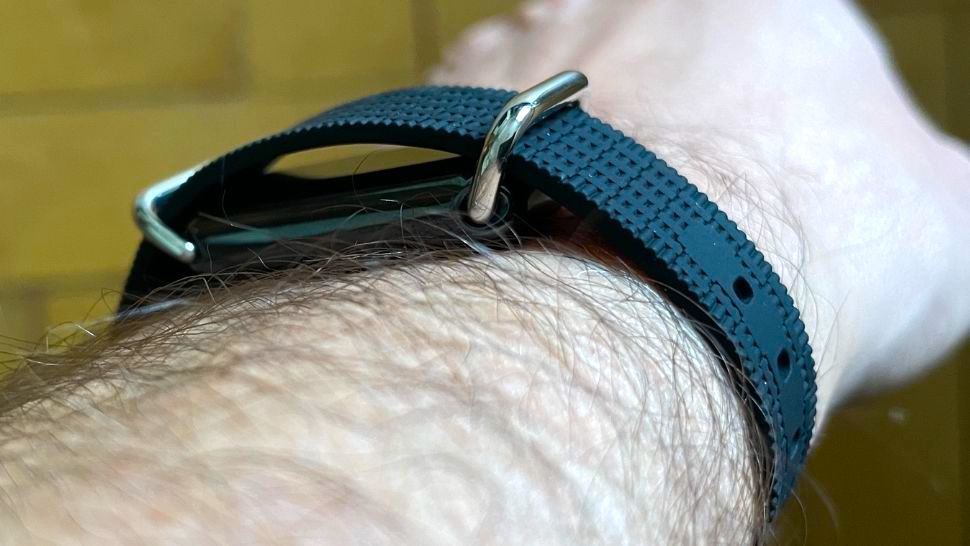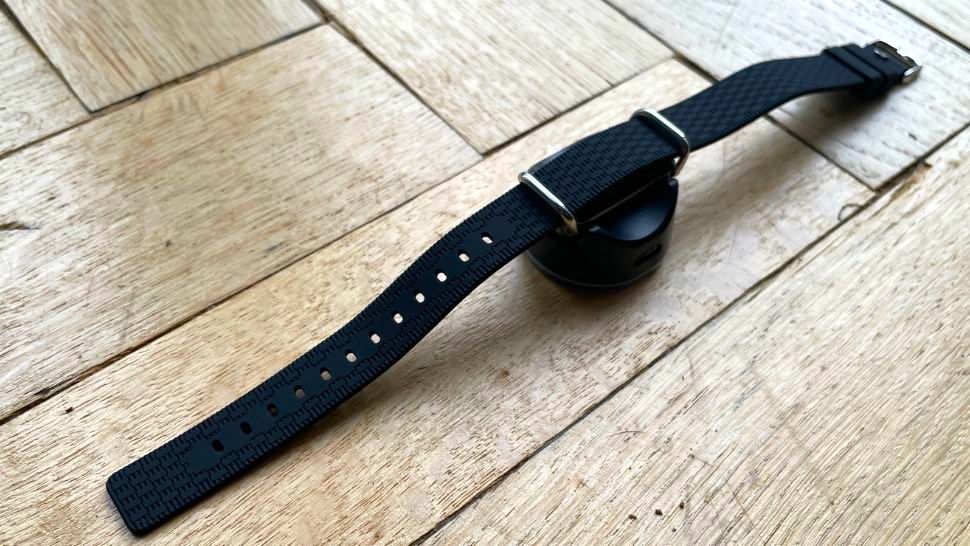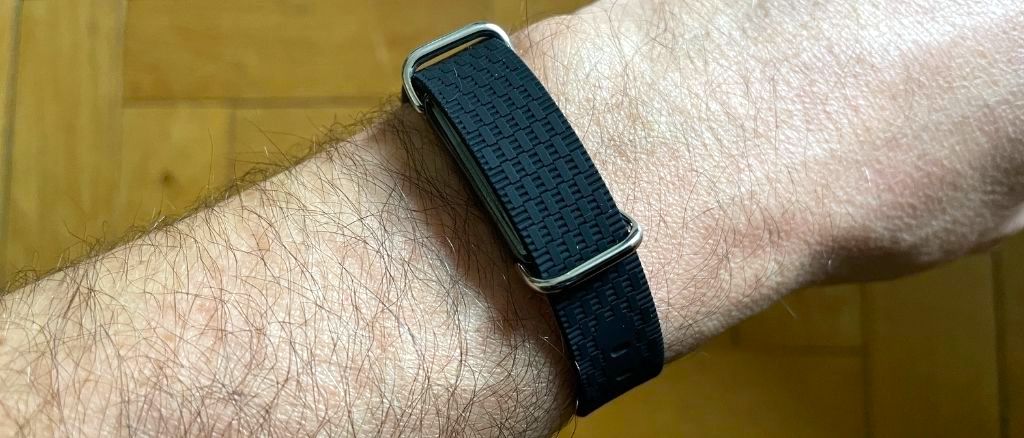TechRadar Verdict
Is this a glimpse of the future of wearables? Reassuring cuff calibration, fuss-free sync and a slick app make this wristable easy for anyone with high blood pressure to live with, though its accuracy is hard to rate.
Pros
- +
Consistent readings
- +
Low maintenance
- +
Comfortable and discreet
- +
Excellent battery life
Cons
- -
Not waterproof
- -
Accuracy is hard to review
- -
Doesn’t sync with other apps
- -
Micro USB connections
Why you can trust TechRadar
Two-minute review
How’s your blood pressure? The wearables market may be dominated by smartwatches and fitness trackers that make algorithm-based estimations of everything from heart rate to oxygen levels, but we’re now seeing the emergence of dedicated medical devices able to track specific medical conditions.
The Aktiia G1 isn’t the first blood pressure monitor we’ve seen, but it’s certainly a much sleeker device than the smartwatch-like BP Doctor Pro. While that device has a miniature pump and air valve that inflates to monitor your blood pressure within a bulky all-in-one wristable, the Aktiia comes in two parts: a bracelet and a cuff.
Why does anyone need to measure their blood pressure continually? Over a billion people have high blood pressure, including 116 million in the US and 30 million in the UK. This ‘silent killer’ is hard to spot, yet strains blood vessels, heart, brain, kidneys and eyes, increasing the risk of heart attacks and strokes.
It’s really easy to use. The bracelet – the 24/7 wearable – weighs just 22g and takes readings when you're at rest. Once each month, you have to calibrate it using the cuff while in a seated position.

The tech itself is a combination of old and new. The cuff, which attaches to a smartphone via Bluetooth, is the traditional upper-arm oscillometric device that can be bought to use at home. But while at-home oscillometric devices are a pain and need to be used frequently, the Aktiia’s cuff only needs to be used once per month to calibrate the bracelet, which uses the same optical PPG (photoplethysmography) sensor that smartwatches and fitness bands.
It’s medically certified and scientifically proven as accurate within a range, but we’re aware that most readings aren’t taken when the user is in a seated position – as is the case during calibration – and that blood pressure can vary across the day. The results will therefore surely be affected by the time of day when you calibrated the bracelet.
Either way, we found setup and calibration straightforward. While the cuff is unpleasant in that it squeezes your radial artery – as with any oscillometric device – it works well and the entire process is step-by-step via the Aktiia app. During our test period we found the bracelet to be unobtrusive, with the battery life stretching to about 10 days and topping up quickly.
Sign up for breaking news, reviews, opinion, top tech deals, and more.
Its blood pressure readings were also consistent. In fact, our only complaints are that the Aktiia ought to be waterproof – something promised for its second iteration later this year – and that there could be a little more insight into a few other activities associated with tackling high blood pressure, such as a basic activity monitor. However, as a one-trick wearable designed to do one thing the Aktiia is impressive.
Price and release date
- Out now in Europe, out soon in the US
- Costs $268 / £199.99 / AU$366
Launched in 2021, Aktiia is currently sold in the UK, Ireland, France, Switzerland, Germany, Austria and Italy, having received a CE Mark as a Class IIa medical device in Europe. It should be available in the US by the end of 2022 once it’s gone through FDA approval process, and also in Canada.
Design
- Bracelet and cuff design
- Bracelet weighs 22g
- Not waterproof
The Aktiia comes in two parts: a small and unobtrusive bracelet, and a larger cuff for using once per month to calibrate it. The bracelet weighs just 22g and comes with a 14mm-wide wrist strap. On its skin side, it sports a green flashing optical PPG (photoplethysmography) sensor.
During our two-week testing period we barely noticed it, even when sleeping, with one exception. Unfortunately it isn't waterproof, so you have to remove it each time you take a shower or swim. Aktiia tells us that this weakness will be addressed in the next version.

What makes the Aktiia really different to smartwatches is its cuff. It’s almost identical to the upper-arm oscillometric devices that can be bought to use at home, though this one has a smaller design and uses Bluetooth to talk to the Aktiia app during a once-per-month calibration. It weighs 264g and measures 130 x 75 x 20mm.
Setup
- Connects via Bluetooth 4.2
- Messages and notifications from a smartphone
The Aktiia is fairly easy to set up, though it takes a few minutes. You’ll need the Aktiia app, an account (it asks for your name, date of birth, sex, weight and height) and a code from your purchase that links your account to the cloud. You then need to pair your phone via Bluetooth to both the bracelet and the cuff, in turn, then put the bracelet on your wrist and the cuff on your upper arm.

Now it's time for calibration, which comprises a check that both the cuff and bracelet are connected to your phone. It then takes two cuff readings to calibrate the system. It took two attempts to pair the devices successfully during out tests. The cuff then took one reading and told us to come back later.
Although that was slightly annoying, medically speaking that approach is spot-on. After all, people with high blood pressure don't need to get stressed out setting up a gadget. A few hours later we successfully repeated the process and were informed by the app that another calibration with the cuff would be needed in one month.
Overall we found the setup surprisingly slick, though we do wonder about the overall accuracy of the calibration given that blood pressure varies during a 24-hour period; shouldn’t it be calibrated every few hours with the cuff upon set-up to avoid readings being consistently higher or lower than they ought to be?

Blood pressure tracking and app
- Blood pressure data is averaged every two hours
- Calibration is required while in seated position
- Aktiia app shows all data clearly
Aktiia automates blood pressure readings. With the exception of that monthly calibration using the cuff and a fortnightly recharge of the bracelet for a couple of hours, it’s maintenance-free and you won’t even notice it doing anything.
So what is it actually doing? Blood pressure reading consists of two pressure numbers expressed as millimetres of mercury (mmHg); systolic (the force at which your heart pumps blood); and diastolic (the resistance to the blood flow in the blood vessels). Aktiia uses its cuff and the bracelet’s PPG sensor to take readings at exactly the same time to calibrate the latter and increase the accuracy of its algorithm. That’s not something you get with a smartwatch (such as the Samsung Galaxy Watch Active 2) that claims to do something similar.
The calibration of the bracelet to the cuff is important because arteries are narrower at the wrist than in the upper arm, so blood pressure measurements tend to be higher and less accurate. Cue Aktiia’s algorithm. It’s hard to say exactly how accurate its results are, but it has been “recommended for BP measurement in the adult population” during a trial.
In our tests our blood pressure readings – which are all taken when the wearer is at rest, and which are displayed very simply in Aktiia’s streamlined app – were all consistent and, happily, all within the normal range.

Open the app and it syncs with the bracelet, taking about a minute to do so to complete that and aggregate all of your data in the cloud. Within seconds you see an updated figure for your average blood pressure and a graph showing your systolic and diastolic readings averaged-out for every two-hour period for each day.
Although there’s not a whole lot of data analysis, it’s immediately obvious that blood pressure varies throughout the day and night, so the average is useful. It also gives a day average and a night average along with a reassuring message (“Your blood pressure was in range 100% of the time, great job!”) and a calculation and a comment on your resting heart rate. Crucially you can then generate a simple PDF report to show your doctor that summarises everything.
Aktiia’s app is simple, easy to understand and practically useful, though we do think it should link-up to other fitness-oriented apps, such as Apple’s Health app. We’re also conscious that we had to manually enter our daily bedtime in the app, which may have fooled the device into measuring our blood pressure while we were still awake and moving.
Battery life
- Proprietary charger
- Lasts about two weeks
- Cuff and bracelet charger use micro USB
With no screen to power and barely any functions except for that flashing optical PPG, the Aktiia is not a power-hungry device. It’s said by the manufacturer to last about a week, but after 10 days the battery had run down only to around 30%, which was impressive. It took about an hour to top it up to 100%.

Although the cuff recharges using a micro USB slot, rather disappointingly the bracelet needs to be recharged on a small proprietary recharging cradle. It's not a huge device, measuring 34mm in diameter, but it could easily get lost. It attaches to power using a micro USB cable. Given the proliferation of USB-C, we would prefer to see that employed on both the charging cradle and on the cuff in Aktiia’s second generation.
First reviewed March 2022
Buy it if
You have high blood pressure
If you have high blood pressure then the best way is to take as many measurements as possible over a long time period, something that’s otherwise almost impossible to do without something like the Aktiia.
You get confusing readings for blood pressure
Measuring blood pressure comes with issues: traditional upper-arm oscillometric devices designed to be used at home very often give inconsistent readings while many people get a raised blood pressure at their doctors just because of the stress of being there. Aktiia averages everything out over time to produce a much more accurate picture of your blood pressure.
Don't buy it if
You want to maximize activity tracking
Although we like that this device is focused solely on blood pressure (and heart rate) we do wonder if it could and should also include some kind of basic activity tracker. After all, one treatment for high blood pressure is increased and regular exercise to make the heart stronger.
You can’t stand micro USB
Sadly both the cuff and the proprietary charger used micro USB, which you may think the consumer electronics industry had moved away from. Happily, there is a micro USB cable in the box.

Jamie is a freelance tech, travel and space journalist based in the UK. He’s been writing regularly for Techradar since it was launched in 2008 and also writes regularly for Forbes, The Telegraph, the South China Morning Post, Sky & Telescope and the Sky At Night magazine as well as other Future titles T3, Digital Camera World, All About Space and Space.com. He also edits two of his own websites, TravGear.com and WhenIsTheNextEclipse.com that reflect his obsession with travel gear and solar eclipse travel. He is the author of A Stargazing Program For Beginners (Springer, 2015),
